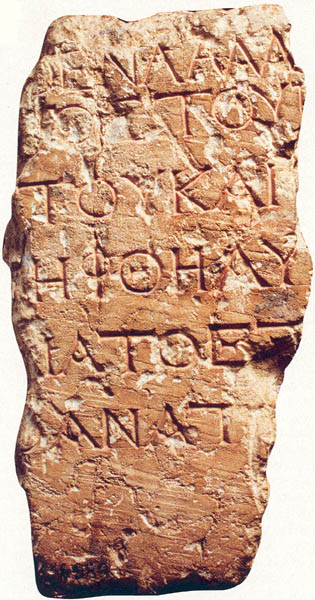Image Details

Collection of the Israel Antiquities authority/Photo Israel Museum, Jerusalem
Gentiles: Keep out. Found in 1935 in Jerusalem’s Old City, this fragmentary limestone slab was once part of a balustrade that surrounded the inner courts of Herod’s Temple. The slab bore a Greek inscription warning Gentiles not to enter, since the inner courts were reserved exclusively for Jews. The full text of the inscription read: “No foreigner may enter within the railing and enclosure that surround the Temple. Anyone apprehended shall have himself to blame for his consequent death!” (The text was reconstructed from a more complete copy now in the Archaeological Museum in Istanbul.) Obviously, the authorities who posted the sign in the Temple expected Gentile visitors to be able to read it.
Though stone was the preferred material for official inscriptions in the ancient world, it was too heavy and expensive for everyday use. Far cheaper and more convenient were pottery sherds, which could be picked up for free anywhere, scribbled on and discarded. If they are inscribed, pottery sherds are called ostraca (singular: ostracon).
